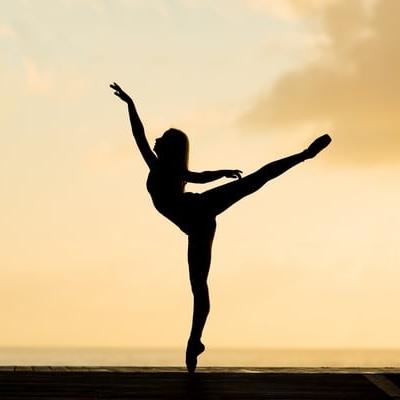Dancer (Danser)
Information on this skill...
A dancer is a practitioner of the art form of dancing, in which the dancer makes movements with the body. Dancing is a broad concept that can relate to different dance styles, such as ballet dancing, tap dancing, belly dancing, breakdance and free dancing. Dancing is moving to music and should be seen as an art form. How someone dances and to what music someone dances is entirely up to the dancer's preference and to the occasion. For example, dancing can be entertainment as a leisure activity or dancing can give an extra dimension during a performance with an audience. For everyone, dancing has its own meaning or dancing brings with it a certain emotion. The main categories in which dances can be classified are the solo dance, the partner dance and the group dance. There are many different dance styles, such as salsa, ballet and hip hop. For everyone there is a certain type of music or style in which the dancer can recognize himself and dance to. Dancing is an art form that can also be described as a form of emotional expression and social interaction. Dancing can also be regarded as a form of non-verbal communication. In most cases, dancing cannot be separated from music, because dance and music complement each other in an important way. Although dancers can dance in different ways, professional dancing cannot simply be compared to free dancing. Professional dancers generally have to deal with a strict dance form in which performing dance movements at the right time is important. A professional dance career as a dancer is therefore not suitable for everyone, because dancers have to deal with strict admission requirements. The profession of dancer must also be seen as fairly general, because everyone can dance at all levels.
As a dancer you move in a rhythmic way, so that there is the art form of dancing. Because dancers do not speak while dancing, there is non-verbal communication. This means that dancers radiate a certain emotion through dancing. This nonverbal communication is usually an important addition to a show, such as a theater show, television show, or movie. It is the dancers who complement the whole in a special way. As described earlier, professional dancing cannot simply be compared to free dancing. Think, for example, of a ballet performance, in which it is very important that all dance movements are performed in the right way at the right time. A professional dancer must therefore have a good rhythmic feeling in addition to a good physical form. Because giving dance performances together will in many cases mean that dancers have to practice a lot, dancers are usually under the guidance of a choreographer. A choreographer is specialized in devising, developing new dance forms including training and/or coaching dancers. Experienced dancers are also generally accompanied by a choreographer.
BECOME A PROFESSIONAL DANCER
The profession of dancer can be regarded as a popular profession, which is why many dancers aspire to a dance career. Today's dancing can no longer be compared to dancing in the past. Nowadays, almost anything is possible when it comes to dancing. This does not alter the fact that there is an important difference between hobby dancers and professional dancers, such as ballet dancers. Professional dancing is not for many people, because the demands and expectations are generally high. In addition, it is true that not all professional dancers will break through as dancers. In general, professional dancers must have special competencies to be able to break through as a professional dancer. Participating in talent shows and castings is also important as a dancer. This is the case, because producers and/or directors can search for specific dancers for each performance, who best fit the performance. It is therefore not the case that professional dancers automatically have a chance of finding work. The profession of dancer requires an iron discipline and smooth movements.
TAKING DANCE LESSONS AT A DANCE SCHOOL
There are dance schools all over the country where people can be taught a certain dance style. During the dance lessons there are usually several people present, who all receive dance lessons within a group under the guidance of a dance teacher or dance teacher. The difficulty of dancing is different for everyone and usually depends on the type of dance. For example, many young girls have gained their first dance experience at the local dance matrons and grow into dancing. There are many different types of dance styles that can be followed. The students can dance through the dance school at different levels, such as basic, bronze, bronze with star, silver, silver with star, gold and the gold star. Taking dance lessons at an early age is generally important for dancers, who eventually want to break through to become a professional dancer Who really wants to make dancing his profession can also go to recognized schools to take lessons, such as a ballet school or a music school where (often) a dance department can be found. There is a big difference between hobby dancing and professional dancing. Professional dancers must have a lot of perseverance, because professional dancing can be considered difficult and heavy.
WORKING AS A DANCER
Following a training to become a dancer does not guarantee work as a dancer. Finding a permanent job as a dancer is also very difficult and there are not many possibilities. Dancers usually work from assignment to assignment and must have an iron discipline. Without iron discipline, you will have a hard time as a dancer. You will usually have to tackle new assignments with both hands. This means that you have to be open to different occasions as a dancer. The type of dance can therefore differ per assignment. The type of dance can also differ per occasion.
WHAT DOES A DANCER DO:
TRAINING TO BECOME A DANCER
If you want to make dancing your profession, it is best to follow the Hbo dance course Dance (Choreography or Theatre Dance). During this dance training you will learn all the tricks of the dance technique and you can also give dance lessons after obtaining your diploma. The training does not only consist of dancing; other subjects are also taught such as the Netherlands and English. Other more specific theory lessons for the programme include anatomy, didactics and methodology. During the training to become a dancer, there will also be regular internships, but most of the time you will be taught at school. To be admitted to the dance school you need at least the VMBO diploma and you will have to audition. In addition to the audition, a medical test will also be taken. Accounting is also important as independent dancers.
COMPANIES WHERE A DANCER CAN WORK
In general, most dancers should be considered entrepreneurs. This means that dancers often have to deal with a contract as an entrepreneur. As a professional dancer, you can also work for dance schools or, for example, work for a theatre producer. In addition, dancers can work for different clients. Think, for example, of smaller assignments, such as commercials, or performing as a background dancer for artists. In general, professional dancers are also affiliated with an artist mediator or affiliated with an impresariat.
COMPETENCES DANCER
The most important competence of a professional dancer is motivation. Without the right motivation, it is not possible to work as a dancer. In addition, a dancer must be energetic and have a lot of perseverance. As a dancer, it is important to never give up, no matter how difficult the profession is sometimes. Dancing is more than just giving dance performance. Usually months of preparation have passed before the dance is ready for the audience. Because dancers often perform within dance groups, a dancer must also have good communication skills. Generally important words are rhythm, passion, inspiration, creativity, flexibility, collaboration, music, performance and stress resistance. Because most dancers have to be considered as entrepreneurs, networking can also be important.
LABOUR MARKET PERSPECTIVE AND CAREER OPPORTUNITIES AS A DANCER
The labour market perspective of a dancer is generally not very large. Not many dancers manage to eventually build a professional career as a dancer. This does not alter the fact that talented dancers can work as professional dancers. That's why it's so important for dancers to practice and network a lot. In general, vacancies dancer are not easy to find. The career opportunities of a dancer should be seen in building a good name, which will increase the number of assignments in dancer. However, good dancers can also work in other ways. Think, for example, of working at a dance school.
TERMS OF EMPLOYMENT AND SALARY DANCER
As a dancer you usually work long hours and usually work in the evenings. In addition to performing in the evening, you usually also have to practice or rehearse as a dancer during the day. The income of a dancer is often agreed per project and can be very different per assignment. The importance of the dancer will also be an important factor for the salary. When you dance alone and therefore play a larger role than in a dance group, the income will usually be higher. Depending on the responsibility, a dancer earns a salary between 2000 and 3000 euros gross per month. The income of a dancer can vary enormously per project.
The content on this page has been automatically translated from the Dutch language. For this reason, texts and videos on this page may contain small errors.
Lesen Sie diese Informationen auf Tanzer auf Deutsch.
Lea esta información sobre Bailarin en español.
Lees deze informatie over Danser in het Nederlands.
Mijnzzp.nl


